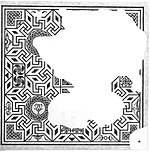Bourne End, Hertfordshire
DacorumVillages in Hertfordshire

Bourne End is a village in Hertfordshire, England. It is situated on the ancient Roman Akeman Street between Berkhamsted and Hemel Hempstead, on the former A41 London-Liverpool Trunk Route, on the Grand Union Canal that runs between London and Birmingham and at the confluence of the Chiltern chalk stream, the Bourne Gutter and the River Bulbourne. It is in the Dacorum Ward of Bovingdon, Flaunden and Chipperfield.
Excerpt from the Wikipedia article Bourne End, Hertfordshire (License: CC BY-SA 3.0, Authors, Images).Bourne End, Hertfordshire
A41, Dacorum
Geographical coordinates (GPS) Address Phone number Website Nearby Places Show on map
Geographical coordinates (GPS)
| Latitude | Longitude |
|---|---|
| N 51.74 ° | E -0.52 ° |
Address
Little Hay Golf Complex
A41
HP1 2SB Dacorum
England, United Kingdom
Open on Google Maps








